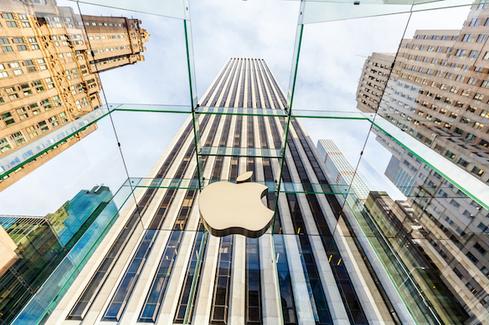
News, news analysis, and commentary on the latest trends in cybersecurity technology.
Apple Offers Closer Look at Its Platform Security Technologies, Features
In a nearly 200-page document, company offers a detailed overview of Secure Enclave and multiple other security controls in Apple silicon-based Macs and other platforms.
February 18, 2021

In a rare move, Apple has decided to give IT professionals and researchers a closer look at the security features and technologies integrated into its various hardware platforms. It's doing so in response to requests for the information from within the community.
The latest version of Apple Platform Security — a document that Apple publishes with every major software release — contains new information on nearly one dozen platform security features and additional data on 15 other security topics that the company has covered in its previous documentation.
A lot of the new information in the latest guide is focused on the security capabilities of Mac laptops and desktops running Apple silicon, which the company began shipping last November. The guide offers a detailed look at the security capabilities enabled on them via Apple's line of new in-house, ARM-based processors. The guide also has more fleshed-out descriptions of core security technologies, like Secure Enclave system-on-a-chip for managing and protecting encryption keys.
According to a company spokesman, the document moves the needle in terms of addressing requests from researchers and defenders for more details on Apple security technologies and features. It sheds light on Apple's philosophy and approach to platform security and why it takes the measures it does to secure its platforms.
In releasing the data, Apple says it wants to give researchers who are taking apart and scrutinizing its security mechanisms a better idea of what the systems are designed to do and how they operate. According to the spokesman, the greater detail in the current report is the outcome constant dialogue with the researcher community and Apple being responsive to their feedback.
At 196 pages, Apple's platform security guide, released today, surpasses the 157-page tome it published in April 2020 to coincide with its last major OS release. The latest guide contains updated information for iOS 14.3, iPadOS 14.3, macOS 11.1, tvOS 14.3, and watchOS 7.2.
Like previous platform security guides, the new one is organized into multiple sections, including hardware security and biometrics, app security, system security, encryption and data protection, and services security.
Topics that have been added include a section on the boot process and boot modes for a Mac running Apple's M1 chip, and another on how startup disk security policy control on a Mac with Apple silicon is different from an Intel-processor based Mac. The sections provide a detailed technical description of the different processes involved in each instance and how they help protect the device from compromise.
Updated Details on Security Enclave, Other Controls
With its new guide, Apple has also updated existing information on several of its key platform security technologies and features. The most significant of these updates involves its highly touted Secure Enclave, a hardware feature present in iPhones, iPads, and other Apple platforms, including — beginning recently — on Macs containing Apple's T1 or T2 chips. Compared to details on the technology in Apple's last platform security guide last April, the latest documentation on Secure Enclave goes into significantly greater on the processor, memory protection engine, boot ROM, boot monitor, and other aspects.
Other topics that have been updated in Apple's new platform security guide release include kernel extensions in macOS, controls for systems integrity protection, and direct memory access protections for Macs.
Apple's decision to disclose more details on its platform security mechanisms comes amid signs of growing attacker interest in its platforms. Just this week, for instance, an independent security researcher disclosed details of malware he discovered targeting systems running Apple's new M1 chip. In addtion, in a report earlier this week, Malwarebytes said it had observed a drop in Windows threats directed at enterprise targets in 2020, even as Mac malware detections went up 31%.
What's more, earlier this month, researchers from Kaspersky disclosed three vulnerabilities in iOS and related technologies that could be used to target iPhones and iPads. And last month, Apple had to push out an update to address three zero-day iOS flaws that it reported as being abused in the wild by adversaries.
About the Author(s)
You May Also Like
Key Findings from the State of AppSec Report 2024
May 7, 2024Is AI Identifying Threats to Your Network?
May 14, 2024Where and Why Threat Intelligence Makes Sense for Your Enterprise Security Strategy
May 15, 2024Safeguarding Political Campaigns: Defending Against Mass Phishing Attacks
May 16, 2024Why Effective Asset Management is Critical to Enterprise Cybersecurity
May 21, 2024
Black Hat USA - August 3-8 - Learn More
August 3, 2024Cybersecurity's Hottest New Technologies: What You Need To Know
March 21, 2024

